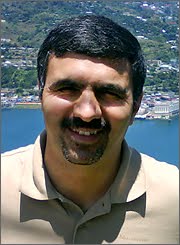In these weeks, we got a lot of news on North Pole and its ice that smells much faster than before. We also remember this spring/summer dryness in USA and a lot of rain in Europe, with coming effects in form of higher price of food in autumn. These climate extremes in Europe and USA are connected to the changes in North Pole, and we expect to have more extreme weather by e.g. too cold and long or too warm winter, or more tornadoes or too dry seasons. These types of stories are going to continue and become more often, and affect people all around the world...
When we listen to the political leaders in the world, there is no real debate and action on these issues. It is usually just talk with the purpose of winning the next election. We hear sometimes strange claims from the politicians of e.g. “the enemies made this climate changes”.
The religious leaders also neglect the scientific discussions on environment. People should pray for rain and other natural disasters, without discussing about why we get these disasters of dryness, tornado, storm, flood, too hot or too cold weather, etc. They are supposed to help people, particularly the most affected ones. It is the core of any religion, but they usually praise the political leaders, and not so much for the people.
Even people do not do better than the politicians and religious leaders. We see that one crazy guy make the film "Innocence of Muslims" which is supported by some extremists, and what turbulent follow it in the Muslim countries by other extremists and kill other people. The respect to life, humanity, other believes and religions are getting vanished. I hope we learn to respect each other, and instead of fighting to think about a more sustainable and better world!













